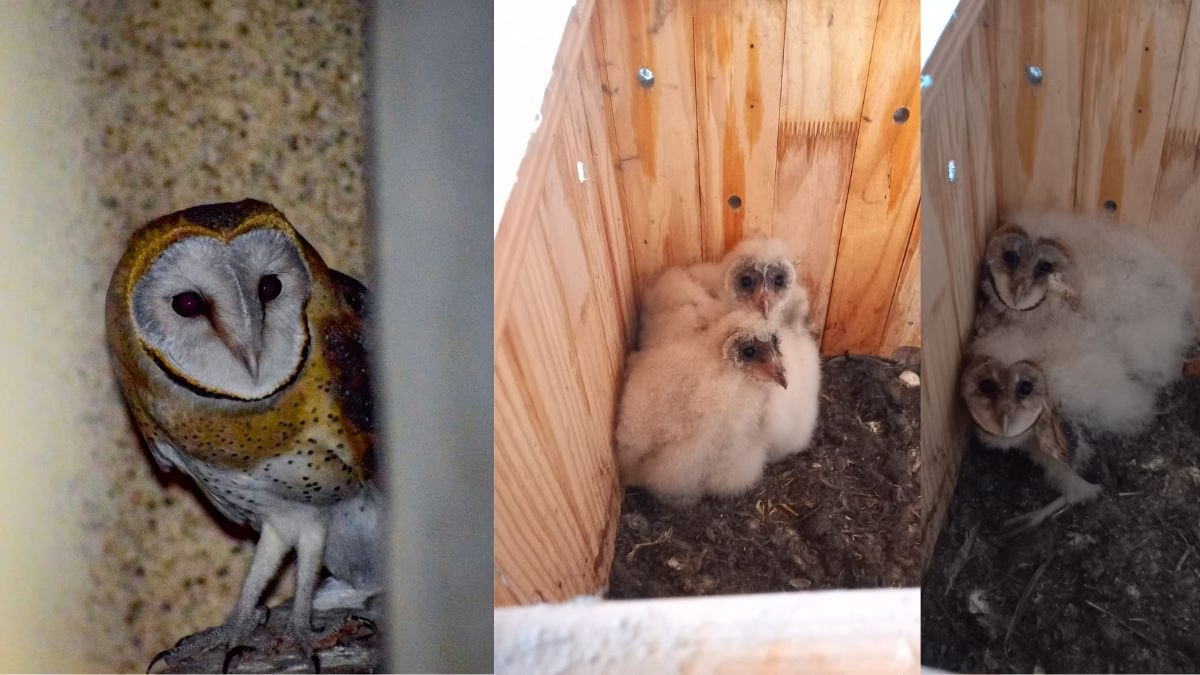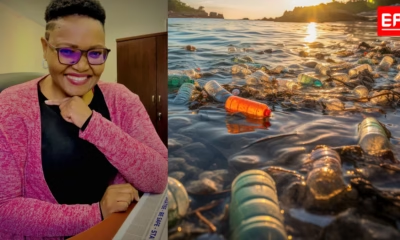Society
The Dance of Science and Business – Partners in Progress
By applying scientific principles to space exploration, Musk revolutionized the aerospace industry

Once upon a time, in the heart of Silicon Valley, there was a bustling café where scientists and entrepreneurs mingled over steaming cups of coffee. Amidst the clatter of keyboards and animated discussions, an unlikely friendship bloomed between two regulars Dr. Sarah, a brilliant physicist, and Mark, a savvy business manager. Little did they know, their daily exchanges would uncover a profound connection between the worlds of science and business management.

As Sarah sipped her coffee one morning, she shared her frustration with Mark about the challenges of funding her research. “I have groundbreaking ideas” she lamented, “but securing financial support feels like very difficult.”
Mark, ever the strategist, leaned in with a knowing smile. “Sarah, think of your research as a startup,” he suggested. “Just like in business you need a clear vision, a solid plan, and the ability to sell your ideas.”
Intrigued, Sarah listened as Mark outlined the parallels between scientific exploration and entrepreneurial endeavor. Mark spoke of risk-taking, innovation, and the importance of seizing opportunities. As their conversation unfolded, Sarah realized that the principles guiding her research were not so different from those driving successful businesses.
Science and Management
Take as an example, the concept of experimentation. In the world of science, hypotheses are tested, data is analysed, and conclusions are drawn. Similarly, in business management, market trends are observed, strategies are implemented, and outcomes are evaluated. Both fields rely on a systematic approach to trial and error, learning from successes and failures alike.
Consider the story of SpaceX, led by the visionary entrepreneur Elon Musk. By applying scientific principles to space exploration, Musk revolutionized the aerospace industry. Through relentless experimentation and innovation, SpaceX achieved what many deemed impossible reusable rocket technology. In doing so, they not only reduced the cost of space travel but also paved the way for future scientific discoveries beyond Earth’s atmosphere.
Challenging the conventional wisdom
Another fundamental aspect shared by science and business management is the pursuit of knowledge. Just as scientists seek to uncover the mysteries of the universe, entrepreneurs strive to understand the needs and desires of their customers. Both endeavors require a curious mind, a thirst for discovery, and a willingness to challenge conventional wisdom.
Consider the case of Airbnb, the online marketplace that transformed the hospitality industry. By harnessing the power of data analytics, Airbnb revolutionized the way people travel and book accommodations. Through continuous research and innovation, they gained invaluable insights into consumer behavior, enabling them to tailor their services to meet evolving demands.
Theory and Practice
As Sarah and Mark delved deeper into their discussion, they realized that the synergy between science and business management was not only evident in theory but also in practice. From research laboratories to boardrooms, individuals armed with curiosity and creativity are driving progress and shaping the future.
In closing, let us remember that the journey of discovery knows no bounds. Whether exploring the frontiers of science or charting new territories in business, we are all pioneers in our own right. So, let us embrace the spirit of collaboration, for in the dance of science and business, lies the promise of endless possibilities.
As Sarah and Mark bid farewell, their minds abuzz with ideas and inspiration, they knew that their friendship was just the beginning of a beautiful partnership—one fueled by curiosity, creativity, and the shared quest for knowledge.
So, dear reader, as you embark on your own journey, remember this: the worlds of science and business may seem worlds apart, but in truth, they are two sides of the same coin, each enriching the other in ways we are only beginning to understand.
Now, go forth and explore, for the greatest discoveries await those who dare to dream and those who dare to do.
Society
Solar Panel Costs Plummet 99% Since 1970s as Cross-Industry Innovations Drive RE Revolution
New MIT research reveals how 81 key technological advances from diverse sectors enabled dramatic cost reductions in photovoltaic systems

The cost of solar panels has dropped by more than 99 percent since the 1970s, enabling widespread adoption of photovoltaic systems that convert sunlight into electricity, according to an interesting new research from the Massachusetts Institute of Technology (MIT).
A comprehensive MIT study has identified the specific innovations behind this dramatic transformation, revealing that technical advances across a web of diverse research efforts and industries played a pivotal role in making solar energy economically viable worldwide.
Cross-industry innovation network
The research, published in PLOS ONE, demonstrates that key innovations often originated outside the solar sector entirely, including advances in semiconductor fabrication, metallurgy, glass manufacturing, oil and gas drilling, construction processes, and even legal domains.
“Our results show just how intricate the process of cost improvement is, and how much scientific and engineering advances, often at a very basic level, are at the heart of these cost reductions,” study senior author Jessika Trancik said in a media statement. “A lot of knowledge was drawn from different domains and industries, and this network of knowledge is what makes these technologies improve.”
Trancik, a professor in MIT’s Institute for Data, Systems, and Society, led the research team that identified 81 unique innovations affecting photovoltaic system costs since 1970, ranging from improvements in antireflective coated glass to the implementation of fully online permitting interfaces.
Strategic Implications for Industry
The findings could prove instrumental for renewable energy companies making R&D investment decisions and help policymakers identify priority areas to accelerate manufacturing and deployment growth.
The research team included co-lead authors Goksin Kavlak, now a senior energy associate at the Brattle Group, and Magdalena Klemun, currently an assistant professor at Johns Hopkins University, along with former MIT postdoc Ajinkya Kamat and researchers Brittany Smith and Robert Margolis from the National Renewable Energy Laboratory.
Key findings
Building on mathematical models previously developed to analyze engineering technologies’ effects on photovoltaic costs, researchers combined quantitative cost modelling with detailed qualitative analysis of innovations affecting materials, manufacturing, and deployment processes.
“Our quantitative cost model guided the qualitative analysis, allowing us to look closely at innovations in areas that are hard to measure due to a lack of quantitative data,” Kavlak said in a media statement.
The team conducted structured literature scans for innovations likely to affect key cost drivers such as solar cells per module, wiring efficiency, and silicon wafer area. They then grouped innovations to identify patterns and tracked industry origins and timing for each advance.
Module vs. Balance-of-system innovations
The researchers distinguished between photovoltaic module costs and balance-of-system (BOS) costs, which cover mounting systems, inverters, and wiring. While PV modules are mass-produced and exportable, many BOS components are designed and built locally.
“By examining innovations both at the BOS level and within the modules, we identify the different types of innovations that have emerged in these two parts of PV technology,” Kavlak added.
The analysis revealed that BOS costs depend more heavily on “soft technologies”—nonphysical elements such as permitting procedures—which have contributed significantly less to cost improvements compared to hardware innovations.
“Often, it comes down to delays. Time is money, and if you have delays on construction sites and unpredictable processes, that affects these balance-of-system costs,” Trancik said.
Industry cross-pollination
The research found that innovations from semiconductor, electronics, metallurgy, and petroleum industries played major roles in reducing both PV and BOS costs. BOS costs were additionally impacted by advances in software engineering and electric utilities.
Notably, while most PV panel innovations originated in research organizations or industry, many BOS innovations were developed by city governments, U.S. states, or professional associations.
“I knew there was a lot going on with this technology, but the diversity of all these fields and how closely linked they are, and the fact that we can clearly see that network through this analysis, was interesting,” Trancik said in a media statement.
“PV was very well-positioned to absorb innovations from other industries—thanks to the right timing, physical compatibility, and supportive policies to adapt innovations for PV applications,” Klemun added.
Quantifying impact
To demonstrate their methodology’s practical applications, researchers estimated specific innovations’ quantitative impact. For example, wire sawing technology introduced in the 1980s led to an overall PV system cost decrease of $5 per watt by reducing silicon losses and increasing manufacturing throughput.
Future applications and computing power
The analysis highlighted the potential role of enhanced computing power in reducing BOS costs through automated engineering review systems and remote site assessment software.
“In terms of knowledge spillovers, what we’ve seen so far in PV may really just be the beginning,” Klemun said, pointing to robotics and AI-driven digital tools’ expanding role in driving future cost reductions and quality improvements.
The research team plans to apply this methodology to other renewable energy systems and further study soft technology to identify processes that could accelerate cost reductions.
“Through this retrospective analysis, you learn something valuable for future strategy because you can see what worked and what didn’t work, and the models can also be applied prospectively. It is also useful to know what adjacent sectors may help support improvement in a particular technology,” Trancik said. “Although the process of technological innovation may seem like a black box, we’ve shown that you can study it just like any other phenomena.”
The research provides crucial insights for understanding how complex technological systems evolve and offers a roadmap for accelerating innovation in renewable energy and other critical technologies through strategic cross-industry collaboration.
Earth
How Barn Owls Brought Nature, Knowledge, and Heart to a South African Campus
At the University of the Free State, South Africa, a quiet conservation story unfolds above the bookshelves – reminding us that even academic spaces can grow wings.

High above the rows of books and hushed reading tables of the Sasol Library at the University of the Free State (UFS), something unexpected is taking flight. A pair of barn owls have made their home in the library’s roof, quietly raising their young and shifting the way an entire academic community sees its role in the world. Their story, both poetic and practical, is becoming a symbol of collaboration, compassion, and conservation.
The owls aren’t just guests—they’re catalysts. What began as a distressed bird outside the library in 2023 has transformed into a university-wide initiative blending science, storytelling, and shared stewardship.
“Our library is a living ecosystem”
For Prof Vasu Reddy, Deputy Vice-Chancellor: Research and Internationalisation, the owls are more than a charming anecdote.
“If we consider Shakespeare’s play, All’s Well That Ends Well, then the presence of the owls in the Sasol Library confirms another meaning of that play,”
“Love,” Prof Reddy says, “is not always considered noble, but is something persistent, and our library is not just a building, but a living ecosystem where precious documents, people, and even animals can interact, shape, and nurture our lives.”

That idea—that libraries are not only homes to knowledge, but habitats for life—is now echoed across campus.
A rescue that became a movement
The turning point came when Tanya Scherman, from the Centre for Teaching and Learning, spotted a sick owl near the library—likely a victim of secondary poisoning from a contaminated rodent.
“It appeared that the owl had been poisoned,” she recalls. “I phoned around trying to find more knowledgeable people who could help.”
Her outreach brought in a network of allies, including the Owl Rescue Centre in Pretoria, a local vet, and Prof Francois Deacon from the Department of Animal Sciences.
“As someone passionate about urban wildlife conservation, I saw a great opportunity – not just to support the owls, but to involve students in hands-on learning,” says Prof Deacon.
Together with his postgraduate students, Ruan Higgs and Kaitlyn Taylor, the team designed a custom nesting box and installed a motion-activated infrared camera to monitor owl activity safely. For Scherman, building the box was a family affair.
“I worked with my dad to build it,” she shares. “He’s an avid animal lover too… It was such a special moment to share with my family.”
From research to relationships
The project has already yielded tangible outcomes. In 2023, the owl pair successfully raised two owlets. This year, six eggs were laid—three owlets are visible so far.

“It captures feeding events, chick development, and parental behaviour,” says Prof Deacon. “This kind of passive monitoring is invaluable… These owls are teaching tools.”
Their footage has already formed the basis for student research on owl diet, nesting habits, and ecological adaptation. And the benefits go beyond science.
“What’s been most rewarding was how many people came together around this – from librarians to students to scientists. We built friendships, not just a nest box.”
Even librarian Hesma van Tonder joined a giraffe capture excursion with Deacon’s team. These moments, Deacon says, are where research and real-life adventure meet.
Symbols of wisdom – and survival
For Scherman, the owls touch something deeper than academic interest.
“My grandparents also had a special connection to owls… When we saw the baby owlets, I naturally felt like I was being promoted to an owl-granny!”
She also hopes to change cultural perceptions around these often-misunderstood birds.
“It’s understandable,” she says, “with their eerie calls, white faces, and ghost-like flight. But they are also messengers, protectors, and symbols of wisdom in many traditions.”
From reducing rodent populations naturally to serving as symbols of coexistence, barn owls bring both ecological and educational value.
“A single owl pair can eat hundreds of rodents in a breeding season,” says Prof Deacon. “We found remains of small birds and insects in their regurgitated pellets… which shows just how active and adaptive they are in an urban environment.”
But risks remain—road traffic, noise, and poisoning threaten their safety. That’s why Scherman and Deacon urge the campus community to be mindful.
“Don’t try to help an injured owl yourself,” says Scherman. “Rather contact Prof Deacon or me… We’re here to assist.”
“Awareness builds respect,” Prof Deacon adds. “Simple behaviours, such as keeping windows closed at night near the roost, go a long way.”
Where silence meets storytelling
As word spread, the initiative grew in meaning—turning the Sasol Library into more than a study space. It’s now a symbol of the university’s values in action.
“It is clear that what may be seen as a disruptive incident with an owl swooping into our library space is also a pedagogical and deeply conservation touchdown,” reflects Prof Reddy.
“Our barn owl event tells us that our library is also a space where silence meets storytelling… where every creature’s story has a rightful place.”
Looking forward
The team is already dreaming bigger. Deacon hopes to expand the project into green corridors, rooftop biodiversity zones, and support for species like bats and pollinators. He sees it as the start of a new kind of campus culture—one rooted in curiosity and care.
“If our university matters and is to remain meaningful,” Prof Reddy says, “our accidental visitors have given new impetus to the fact that our library space holds our stories, and they are making places for new ones as part of our responsible societal futures.”
As the owls continue their quiet vigil above the Sasol Library, they leave more than pellets behind. They leave a legacy of connection—between people, nature, and the pursuit of knowledge. And in that space, where a library became a nest, a new kind of learning has taken flight.
Society
How 2025’s Emerging Technologies Could Redefine Our Lives

In an age when algorithms help cars avoid traffic and synthetic microbes could soon deliver our medicine, the boundary between science fiction and science fact is shrinking. The World Economic Forum’s Top 10 Emerging Technologies of 2025 offers a powerful reminder that innovation is not just accelerating — it’s converging, maturing, and aligning itself to confront humanity’s most urgent challenges.
From smart cities to sustainable farming, from cutting-edge therapeutics to low-impact energy, this year’s list is more than a forecast. It’s a blueprint for a near future in which resilience and responsibility are just as crucial as raw invention.
Sensing the World Together
Imagine a city that can sense a traffic jam, redirect ambulances instantly, or coordinate drone deliveries without a hiccup. That’s the promise of collaborative sensing, a leading entry in the 2025 lineup. This technology enables vehicles, emergency services, and infrastructure to “talk” to each other in real time using a network of connected sensors — helping cities become safer, faster, and more responsive.
It’s one of several technologies on this year’s list that fall under the theme of “trust and safety in a connected world” — a trend reflecting the growing importance of reliable information, responsive systems, and secure networks in daily life.
Trust, Truth, and Invisible Watermarks
But as digital content spreads and AI-generated images become harder to distinguish from reality, how do we safeguard truth? Generative watermarking offers a promising solution. By embedding invisible tags in AI-generated media, this technology makes it easier to verify content authenticity, helping fight misinformation and deepfakes.
“The path from breakthrough research to tangible societal progress depends on transparency, collaboration, and open science,” said Frederick Fenter, Chief Executive Editor of Frontiers, in a media statement issued alongside the report. “Together with the World Economic Forum, we have once again delivered trusted, evidence-based insights on emerging technologies that will shape a better future for all.”
Rethinking Industry, Naturally
Other breakthroughs are tackling the environmental consequences of how we make things.
Green nitrogen fixation, for instance, offers a cleaner way to produce fertilizers — traditionally one of agriculture’s biggest polluters. By using electricity instead of fossil fuels to bind nitrogen, this method could slash emissions while helping feed a growing planet.
Then there’s nanozymes — synthetic materials that mimic enzymes but are more stable, affordable, and versatile. Their potential applications range from improving diagnostics to cleaning up industrial waste, marking a shift toward smarter, greener manufacturing.
These technologies fall under the trend the report identifies as “sustainable industry redesign.”
Health Breakthroughs, From Microbes to Molecules
The 2025 report also spotlights next-generation biotechnologies for health, a category that includes some of the most exciting and potentially transformative innovations.
Engineered living therapeutics — beneficial bacteria genetically modified to detect and treat disease from within the body — could make chronic care both cheaper and more effective.
Meanwhile, GLP-1 agonists, drugs first developed for diabetes and obesity, are now showing promise in treating Alzheimer’s and Parkinson’s — diseases for which few options exist.
And with autonomous biochemical sensing, tiny wireless devices capable of monitoring environmental or health conditions 24/7 could allow early detection of pollution or disease — offering critical tools in a world facing climate stress and health inequities.
Building Smarter, Powering Cleaner
Under the theme of “energy and material integration”, the report also identifies new approaches to building and powering the future.
Structural battery composites, for example, are materials that can both carry loads and store energy. Used in vehicles and aircraft, they could lighten the load — quite literally — for electric transportation.
Osmotic power systems offer another intriguing frontier: by harnessing the energy released when freshwater and saltwater mix, they provide a low-impact, consistent power source suited to estuaries and coastal areas.
And as global electricity demand climbs — especially with the growth of AI, data centers, and electrification — advanced nuclear technologies are gaining renewed interest. With smaller, safer designs and new cooling systems, next-gen nuclear promises to deliver scalable zero-carbon power.
Toward a Converging Future
This year’s edition of the report emphasizes a deeper trend: technological convergence. Across domains, innovations are beginning to merge — batteries into structures, biology into computing, sensing into infrastructure. The future, it seems, will be shaped less by standalone inventions and more by integrated, systemic solutions.
“Scientific and technological breakthroughs are advancing rapidly, even as the global environment for innovation grows more complex,” said Jeremy Jurgens, Managing Director of the World Economic Forum, in the WEF’s official media release.
“The research provides top global leaders with a clear view of which technologies are approaching readiness, how they could solve the world’s pressing problems and what’s required to bring them to scale responsibly,” he added.
Beyond the Hype
Now in its 13th year, the Top 10 Emerging Technologies report has a strong track record of identifying breakthroughs poised to move from lab to life — including mRNA vaccines, flexible batteries, and CRISPR-based gene editing.
But this year’s list is not just a celebration of possibility. It’s a reminder of what’s needed to deliver impact at scale: responsible governance, sustained investment, and public trust.
As Jeremy Jurgens noted, “Breakthroughs must be supported by the right environment — transparent, collaborative, and scalable — if they are to benefit society at large.”
In a time of climate stress, digital overload, and health inequity, these ten technologies offer something rare: a credible roadmap to a better future — not decades away, but just around the corner.
-

 Society6 months ago
Society6 months agoStarliner crew challenge rhetoric, says they were never “stranded”
-

 Space & Physics5 months ago
Space & Physics5 months agoCould dark energy be a trick played by time?
-

 Women In Science5 months ago
Women In Science5 months agoNeena Gupta: Shaping the Future of Algebraic Geometry
-

 Earth6 months ago
Earth6 months agoHow IIT Kanpur is Paving the Way for a Solar-Powered Future in India’s Energy Transition
-

 Space & Physics5 months ago
Space & Physics5 months agoSunita Williams aged less in space due to time dilation
-

 Earth4 months ago
Earth4 months ago122 Forests, 3.2 Million Trees: How One Man Built the World’s Largest Miyawaki Forest
-

 Know The Scientist5 months ago
Know The Scientist5 months agoMysterious, resilient, and radiant: The timeless legacy of Marie Curie
-

 Women In Science6 months ago
Women In Science6 months agoHow Dr. Julia Mofokeng is Rewriting the Story of Plastic Waste























